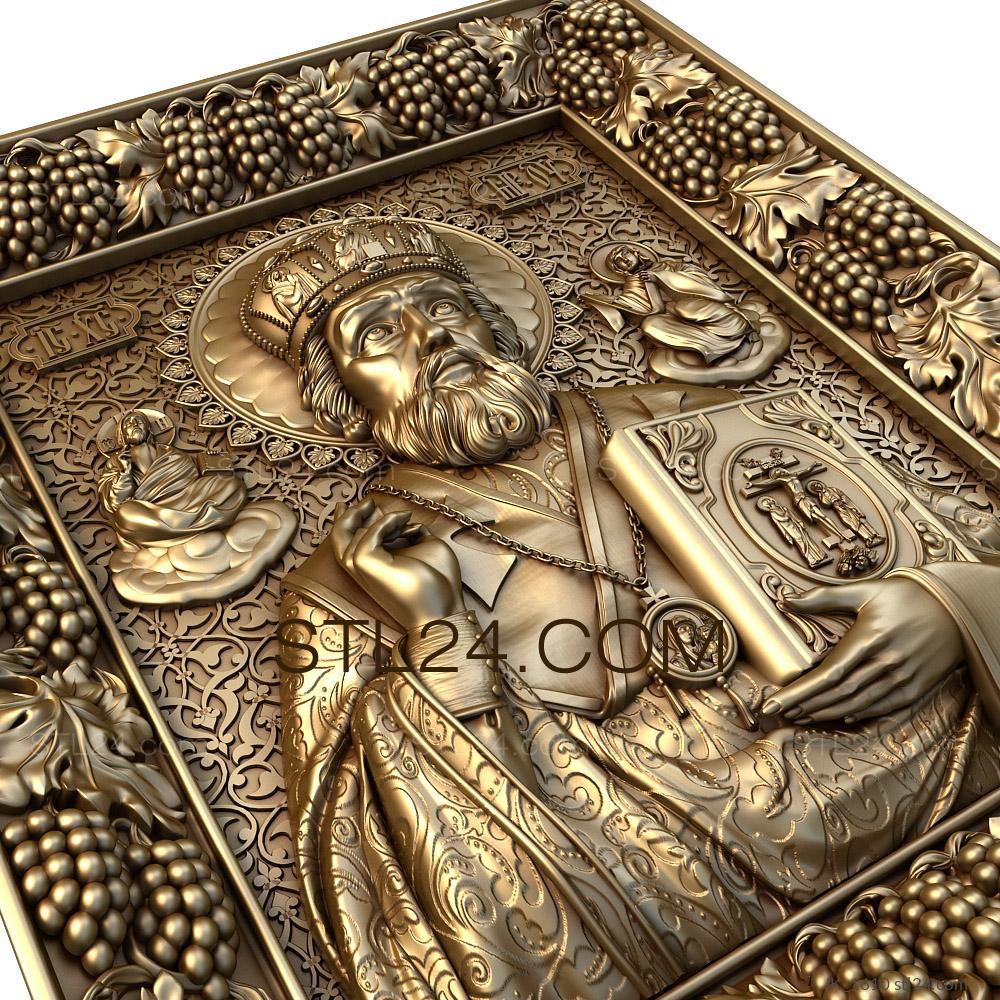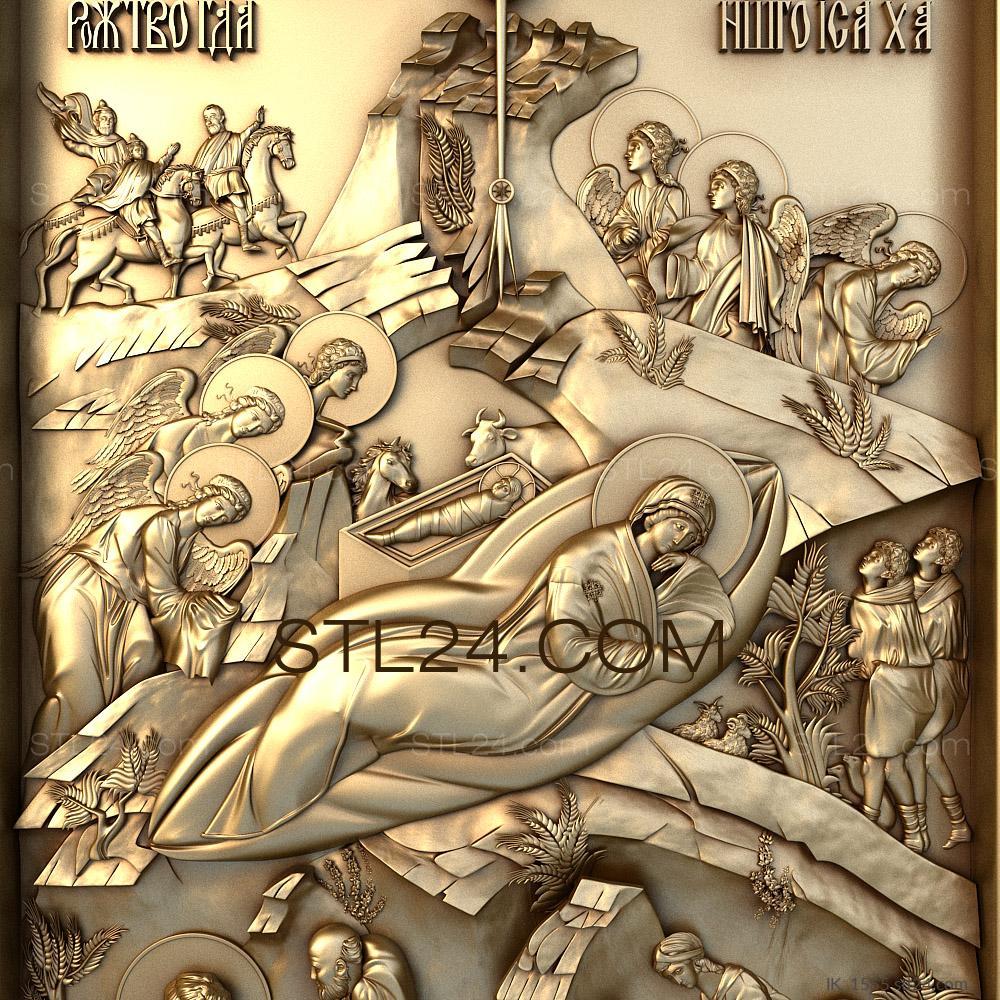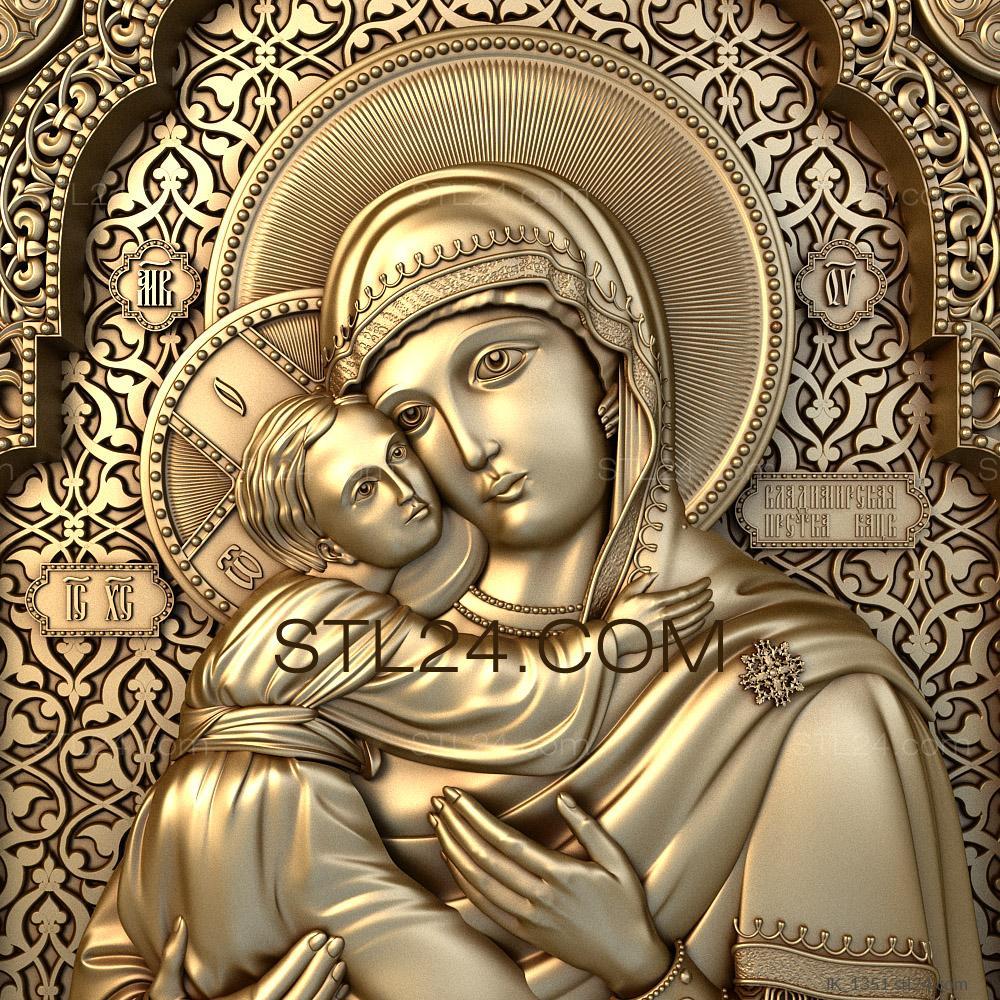
There are very different types of icons: mosaic, molded, embroidered, created with the help of beading, etc. The most popular are those painted with paints on a board or on canvas. Nevertheless, carved relief icons, models of which are presented on our website, are not a novelty, but a centuries-old tradition, which in different times was persecuted or honored as a high-quality and beautiful religious product.
In this article we will talk about how and when carved icons appeared, about those facts in history, which had to face the images "on the rubber". And we will show examples of CNC models.
Today icons from wood are made on machines with CNC (numerical program control). And for the work you need 3d models of future products. If you have a machine with CNC, it will not be difficult to create an icon of any complexity. On our site you can buy high-quality models with detailed drawing, with the help of which you will make images that are characterized by high quality, long service life, attractive appearance, high detail of the plot. Icons created by our models do not leave indifferent! Serve as a great gift to Orthodox people. They become a real decoration of the temple or home iconostasis.
When did the first carved icons appear?
It is known that in Byzantium, about 1 century from the Nativity of Christ, appeared the first three-dimensional icons carved from wood in bas-relief technique of carving.
Byzantine masters adopted this method of creating images from the ancient culture, popular for its bas-reliefs and sculptures on stone.
In Byzantium, three-dimensional icons were created on expensive types of wood, ivory and mother-of-pearl.
Moreover, excavations of ancient Byzantine cities confirmed the widespread use of three-dimensional icons (not only among the nobility, but also among ordinary citizens).
In Russia, the first carved icons appeared immediately after the adoption of Christianity in the 11th century. They were called icons on rubber (chronicles record such a name of images brought from Byzantium). The faces of the Saints, made on the material, in bas-relief and high relief techniques, were presented as expensive gifts.
The tradition was quickly adopted by Old Russian masters, who were famous for their skill. After all, in Russia wood carving was widespread and in great demand. As wood was the main material in the manufacture of houses and terems, household items. And carvers helped to decorate it, add zest.
Russian masters mastered new bas-relief carving techniques. Byzantine faces, painted icons, illustrations to Biblical texts were taken as a model. In Russia, carving was made exclusively of wood. That was due to the wide availability of this material. In rare cases exotic varieties of trees brought from distant countries were used.
And carved icons were much more numerous than pictorial ones, they were more accessible. After all, icon painters-artists at the dawn of Orthodoxy in Russia was little.

The time of the heyday of the carved icon:
Historians claim that from the 15th century to the early 17th century, carved icons had their greatest heyday. The time of the "golden age" of the carved icon.
Monasteries had their own workshops where wooden carved images were created. The masters produced not only carved icons, but also frames, icon stands and other carved items for church decoration. The work was blessed by priests.
Masters covered carved icons with oil or wax for greater preservation of the image. Sometimes carved icons were painted, images were covered with gold leaf and silver, decorated with pearls and semi-precious stones.
However, from the middle of the 17th century, a period of persecution of carved icons began.

The period of persecution of the carved icon:
The main reason for this was the reform of Patriarch Nikon and the decree of Peter the Great "on the correction of the icon image".
Interestingly, it was Peter, who was so fond of everything Western, preferred new types of iconostases, and appreciated sculptural carving, that for some reason proclaimed a complete rejection of any three-dimensional images, except for the faces on crosses. In those days, all carved three-dimensional icons were recognized as a legacy of paganism. And were subject to destruction.
The fight against Old Believers began, including the destruction of icons on rez.
Antique icons that survived and survived to our days were either hidden by Old Believers' families or were made in northern settlements remote from the capitals.
Even in Soviet times, during the destruction of churches, beautiful carved icons were often found walled up (hidden from destruction).
The second wave of persecution of carved icons began in 1832, when the Holy Synod issued a decree that churches should not have any icons other than holy images.
But in 1905 a decree was adopted "on strengthening the beginnings of religious tolerance", which allowed the Old Believers to come out of the shadows and return carved icons to the temples.
All the time of persecution, carvers continued in secret their skill and made carved icons in the Urals and Siberia.

Carved icon in our time:
In the second half of the 20th century there was an interest in church-religious carving, including Russian history and traditions.
At the same time, new technology for making carved icons, such as CNC machines, began to be used.
Programmable devices allow to make products quickly, qualitatively, flawlessly accurate.
The device almost autonomously cuts out complex decorations on the material, creating a beautiful and accurate face of the Saint. To work need only a suitable material (mainly hardwood - oak, beech, ash, but can be used and stone - marble, granite, other materials) and the model of the future product.
Models of icons and other products for churches and temples in a wide range are presented on our site. In addition, you can always order exclusive production of models according to your specifications.
See other articles on our site:
- Icons of the Virgin Mary: types and features, models in stl format.
- Carving in the Russian, Slavic style: features, 3d models
- Development of 3d models of icons for CNC. Modeling to order.
- Iconostases. Types. Features. 3d models for CNC machines.











